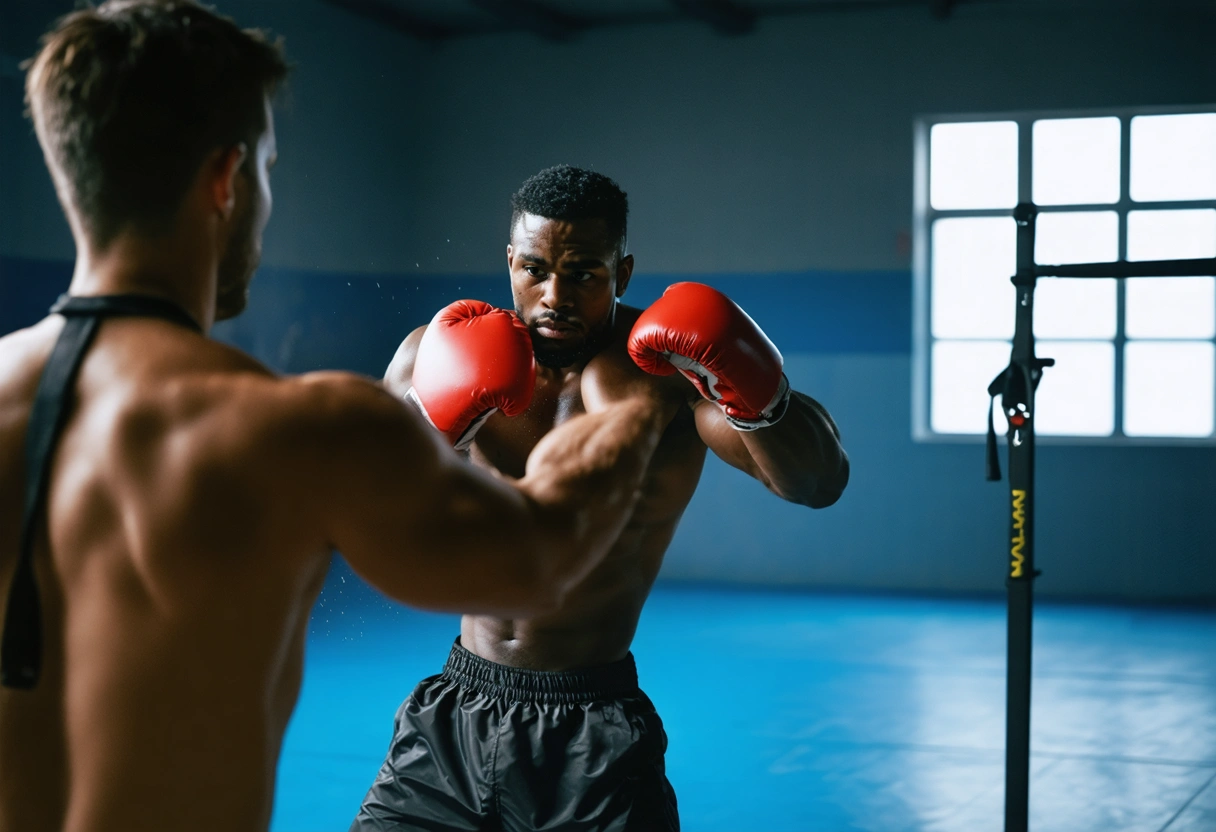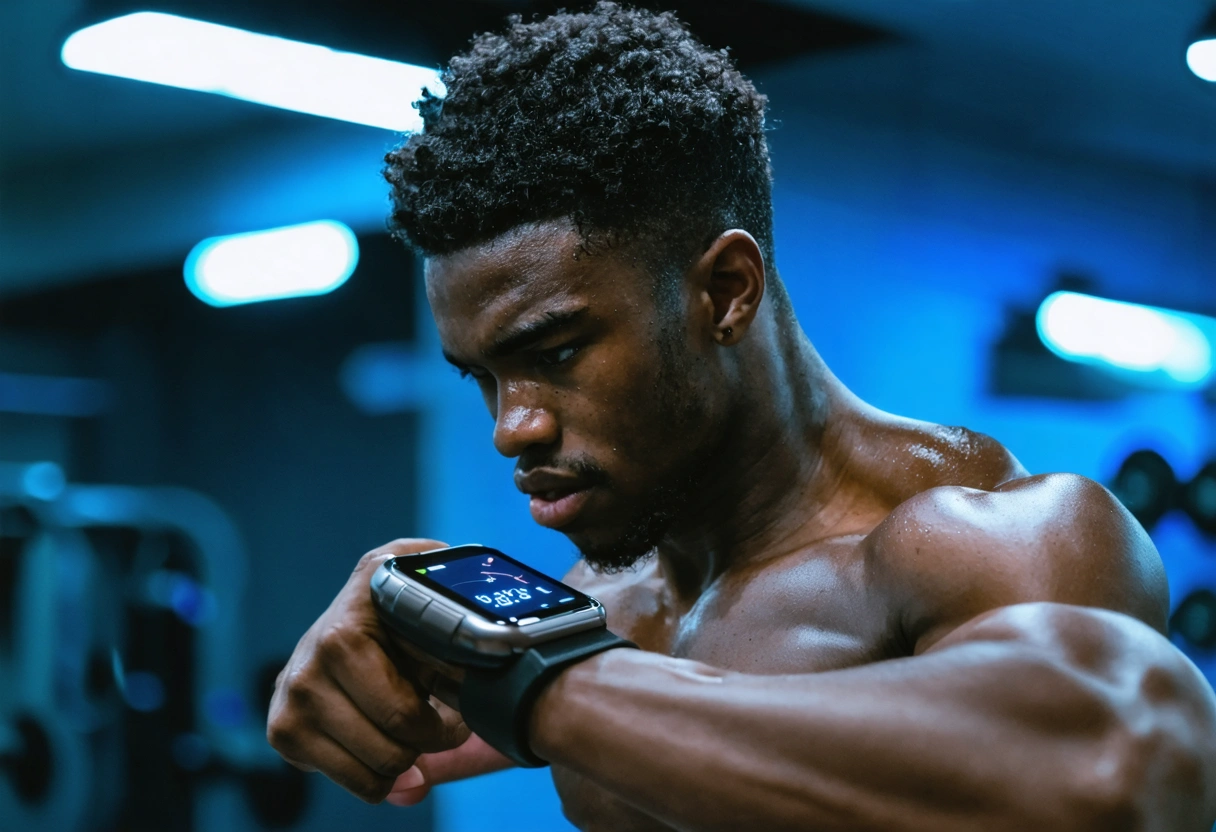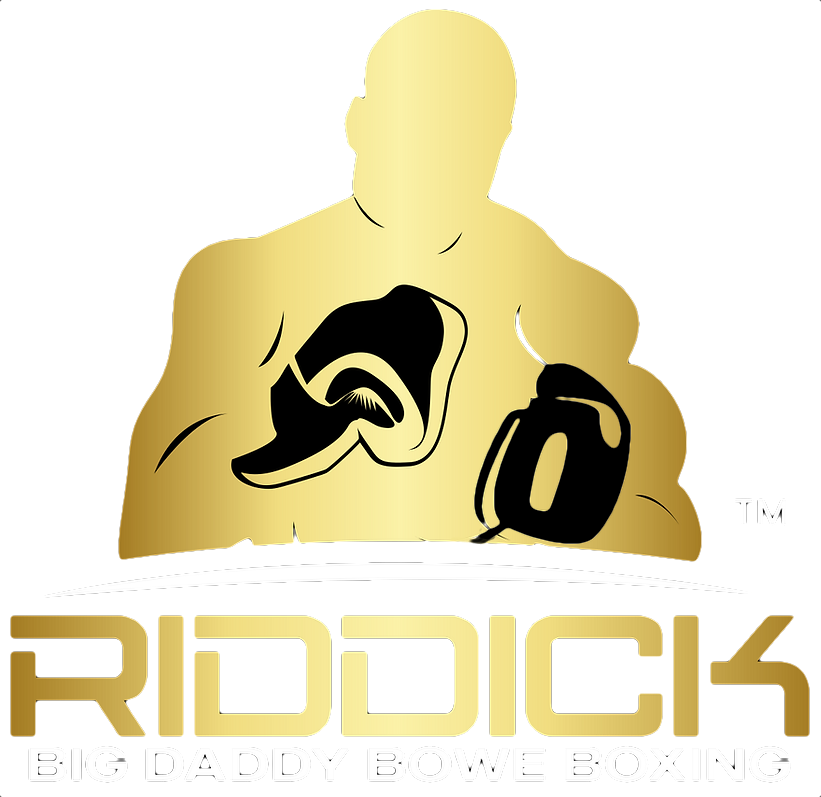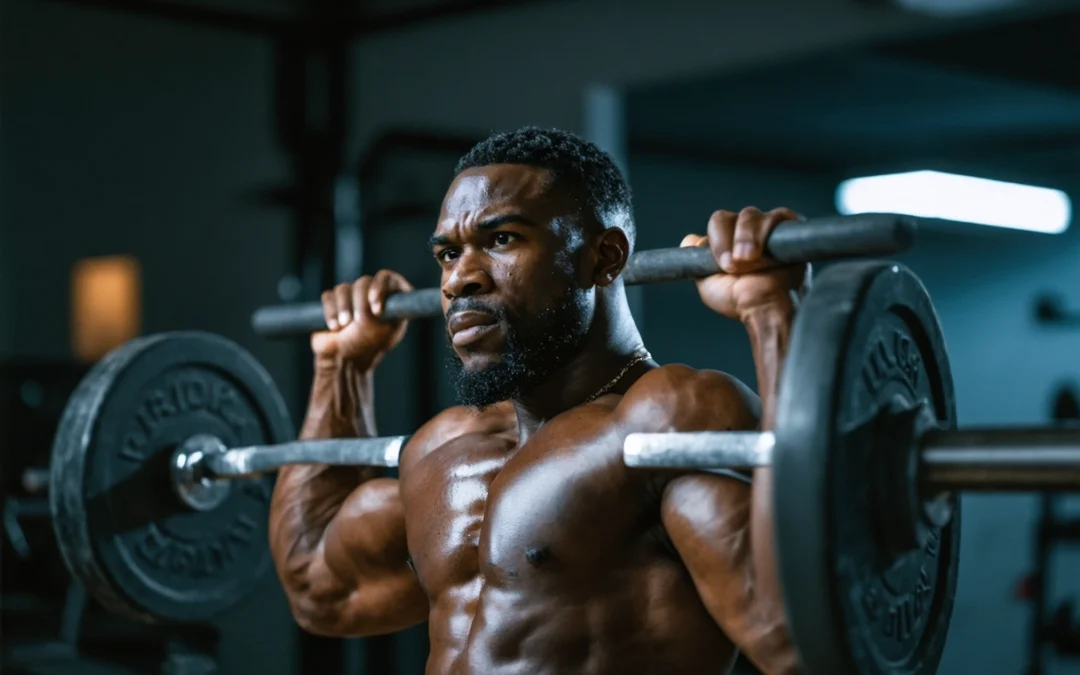Introduction to Riddick ‘Big Daddy’ Bowe’s Training Philosophy
Riddick ‘Big Daddy’ Bowe, a legendary figure in the world of boxing, is renowned not only for his exceptional talent in the ring but also for his innovative training strategies. His approach to preparing for fights is a masterclass in discipline, strategy, and adaptation. Bowe’s training philosophy is rooted in a deep understanding of both the physical and mental demands of boxing, making his strategies highly effective for optimizing fight preparedness.
In this article, we delve into the top training strategies employed by Riddick Bowe, exploring how these can be utilized by both amateur and professional fighters to enhance their performance. From conditioning to mental fortitude, Bowe’s holistic approach offers valuable insights for those looking to elevate their game.
Strength and Conditioning: Building a Strong Foundation
One of the cornerstones of Bowe’s training regimen is a focus on strength and conditioning. He understood that boxing is not just about technique but also about physical preparedness. To optimize his strength, Bowe engaged in a variety of exercises designed to enhance muscle endurance, power, and overall body strength.
Weight training played a significant role in Bowe’s routine. Exercises such as bench presses, deadlifts, and squats were staples in his regimen, helping to build the core strength necessary for powerful punches and sustained performance in the ring. Additionally, Bowe incorporated plyometric exercises like box jumps and medicine ball throws to improve his explosiveness and agility.
Beyond weight training, Bowe placed a strong emphasis on cardiovascular conditioning. Long-distance running, interval training, and skipping rope were all integral parts of his cardio routine, ensuring he had the stamina to last through grueling matches. His commitment to conditioning was not just about physical benefits but also about ensuring his mind was as tough as his body.
Technical Training: Mastery of Skills

While physical strength is crucial, technical proficiency is what separates great boxers from good ones. Bowe dedicated countless hours to perfecting his technical skills, focusing on footwork, punch accuracy, and defensive maneuvers. He believed that every fighter should have a solid technical foundation to succeed in the ring.
Sparring was an essential component of Bowe’s technical training. By sparring with a variety of partners, he honed his skills in real-time, adapting to different styles and strategies. This allowed him to develop a versatile fighting style capable of countering any opponent.
Bowe also emphasized the importance of shadow boxing and bag work. These exercises helped him refine his technique, improve his hand speed, and build muscle memory. He often practiced combinations repeatedly until they became second nature, ensuring that his reactions in the ring were instinctual and efficient.
Nutrition: Fueling the Fighter’s Body
A critical yet often overlooked aspect of Bowe’s training strategy was his approach to nutrition. Understanding that food is fuel, he worked closely with nutritionists to develop a diet tailored to his specific needs. This ensured he had the energy required for intense training sessions and recovery.
Bowe’s diet was rich in lean proteins, complex carbohydrates, and healthy fats, providing a balanced intake that supported muscle growth and repair. He also prioritized hydration, recognizing the importance of maintaining electrolyte balance, especially during long training sessions or fights.
Additionally, Bowe understood the role of supplements in optimizing performance. Vitamins, minerals, and amino acids were carefully incorporated into his diet to ensure he met all his nutritional requirements. This comprehensive approach to nutrition helped him maintain peak physical condition throughout his career.

Mental Conditioning: Building Resilience and Focus
Physical prowess alone is not sufficient for success in boxing, a fact that Bowe understood well. Mental conditioning is crucial, as the psychological demands of the sport are immense. Bowe developed strategies to build mental resilience, ensuring he was as prepared mentally as he was physically.
Visualization was one of Bowe’s key mental conditioning techniques. By visualizing his fights in detail, he prepared himself for various scenarios in the ring. This mental rehearsal helped reduce anxiety and increase confidence, giving him a psychological edge over his opponents.
Bowe also practiced mindfulness and meditation to enhance his focus and concentration. These practices helped him remain calm under pressure and maintain clarity of thought during intense bouts. By prioritizing mental health, Bowe was able to perform consistently at the highest level.
Adapting Training for Individual Needs
One of the most remarkable aspects of Bowe’s training philosophy was his insistence on tailoring strategies to individual needs. He recognized that each fighter is unique, with different strengths, weaknesses, and requirements. As such, he advocated for a personalized approach to training.
Bowe often adjusted his training intensity and focus based on his current goals and any physical limitations he might be experiencing. This adaptability ensured that he maximized his training outcomes while minimizing the risk of injury. By listening to his body and making necessary adjustments, Bowe exemplified the importance of a flexible training regimen.
Furthermore, Bowe believed in the importance of continuous learning and adaptation. He stayed updated with the latest advancements in sports science and training techniques, incorporating new methods that could enhance his performance. This commitment to growth and development was a testament to his dedication as a fighter.

The Legacy of Riddick Bowe’s Training Strategies
Riddick ‘Big Daddy’ Bowe’s training strategies have left an indelible mark on the boxing world. His holistic approach, which emphasized strength, technical skill, nutrition, mental conditioning, and adaptability, serves as a blueprint for fighters aiming to optimize their fight preparedness.
By integrating these strategies, fighters can build a comprehensive training regimen that prepares them for the physical and mental challenges of the ring. Bowe’s legacy is not just in his victories but in the wisdom he imparted to future generations of fighters. His commitment to excellence and innovation continues to inspire athletes around the world.
Incorporating Modern Training Technologies
In today’s fast-paced world, the integration of technology into sports training is inevitable. Riddick Bowe’s strategies, though rooted in traditional methods, can be further enhanced with modern training technologies. By leveraging these advancements, fighters can gain deeper insights into their performance and make data-driven decisions to improve their training outcomes.
Wearable technology, such as fitness trackers and smartwatches, allows athletes to monitor their heart rate, calorie burn, sleep patterns, and overall physical activity. This real-time data enables fighters to track their progress and make necessary adjustments to their training regimen. For instance, understanding one’s recovery patterns can help optimize rest days and prevent overtraining.
Furthermore, video analysis tools provide fighters with the opportunity to review their sparring sessions and matches in detail. By analyzing footage, athletes can identify areas for improvement, such as refining techniques or enhancing defensive strategies. This visual feedback loop is invaluable for continuous skill development and strategic planning.

The Role of Recovery in Bowe’s Training Approach
Recovery is an essential component of any training program, and Bowe’s approach was no exception. He understood that allowing the body ample time to rest and repair was crucial for sustained performance. In modern training, the importance of recovery has only become more pronounced, with new methods and tools available to aid the process.
Active recovery techniques, such as foam rolling and stretching, help alleviate muscle soreness and improve flexibility. Bowe would often incorporate these practices into his routine to ensure his muscles remained pliable and free from tension. Additionally, techniques like cryotherapy and massage therapy have gained popularity, offering fighters alternative ways to expedite recovery and enhance muscular function.
Nutrition also plays a pivotal role in recovery. Consuming the right nutrients post-training helps replenish glycogen stores and repair damaged tissues. Bowe’s focus on a balanced diet rich in proteins and carbohydrates supported his recovery process and ensured he returned to training sessions at full capacity.
Community and Support Systems in Training
No fighter stands alone, and Bowe was keenly aware of the importance of community and support systems in his training journey. Surrounding oneself with a dedicated team of coaches, nutritionists, medical professionals, and supportive peers can make a significant difference in an athlete’s career.
Bowe’s success was partly due to the strong relationships he built with his team. Having knowledgeable coaches provided him with guidance and motivation, while a supportive peer group offered camaraderie and encouragement. This network fostered an environment where Bowe could thrive and continuously push his limits.

In today’s world, the concept of community extends beyond physical presence. Online forums, social media groups, and virtual training communities allow fighters to connect, share experiences, and gain insights from a global audience. This expanded network can provide additional resources and support, enhancing the training experience.
Lessons from Riddick Bowe’s Career for Aspiring Fighters
Riddick Bowe’s illustrious career offers numerous lessons for aspiring fighters. At its core, his journey highlights the importance of dedication, resilience, and continuous self-improvement. While talent is crucial, Bowe’s success was largely driven by his unwavering commitment to his craft and his willingness to adapt and learn.
One key lesson is the importance of setting clear, achievable goals. Bowe’s career was marked by a series of milestones that he diligently worked towards. By setting specific objectives and developing a plan to achieve them, fighters can maintain focus and motivation throughout their training.
Another lesson is the value of perseverance in the face of challenges. Bowe encountered numerous obstacles during his career, yet he remained steadfast in his pursuit of excellence. Aspiring fighters can draw inspiration from his tenacity, understanding that setbacks are part of the journey and can be overcome with determination and effort.
Embracing a Comprehensive Training Philosophy
Riddick ‘Big Daddy’ Bowe’s training strategies serve as a comprehensive guide for optimizing fight preparedness. His approach, which encompasses physical conditioning, technical proficiency, nutrition, mental resilience, and adaptability, is timeless in its relevance and effectiveness. By embracing these principles, fighters can develop a well-rounded training regimen that maximizes their potential.
As the world of boxing continues to evolve, integrating modern technologies and recovery techniques can further enhance these foundational strategies. By staying informed and adaptable, fighters can remain competitive in an ever-changing landscape. Ultimately, Bowe’s legacy is a testament to the power of hard work, innovation, and the relentless pursuit of greatness.

